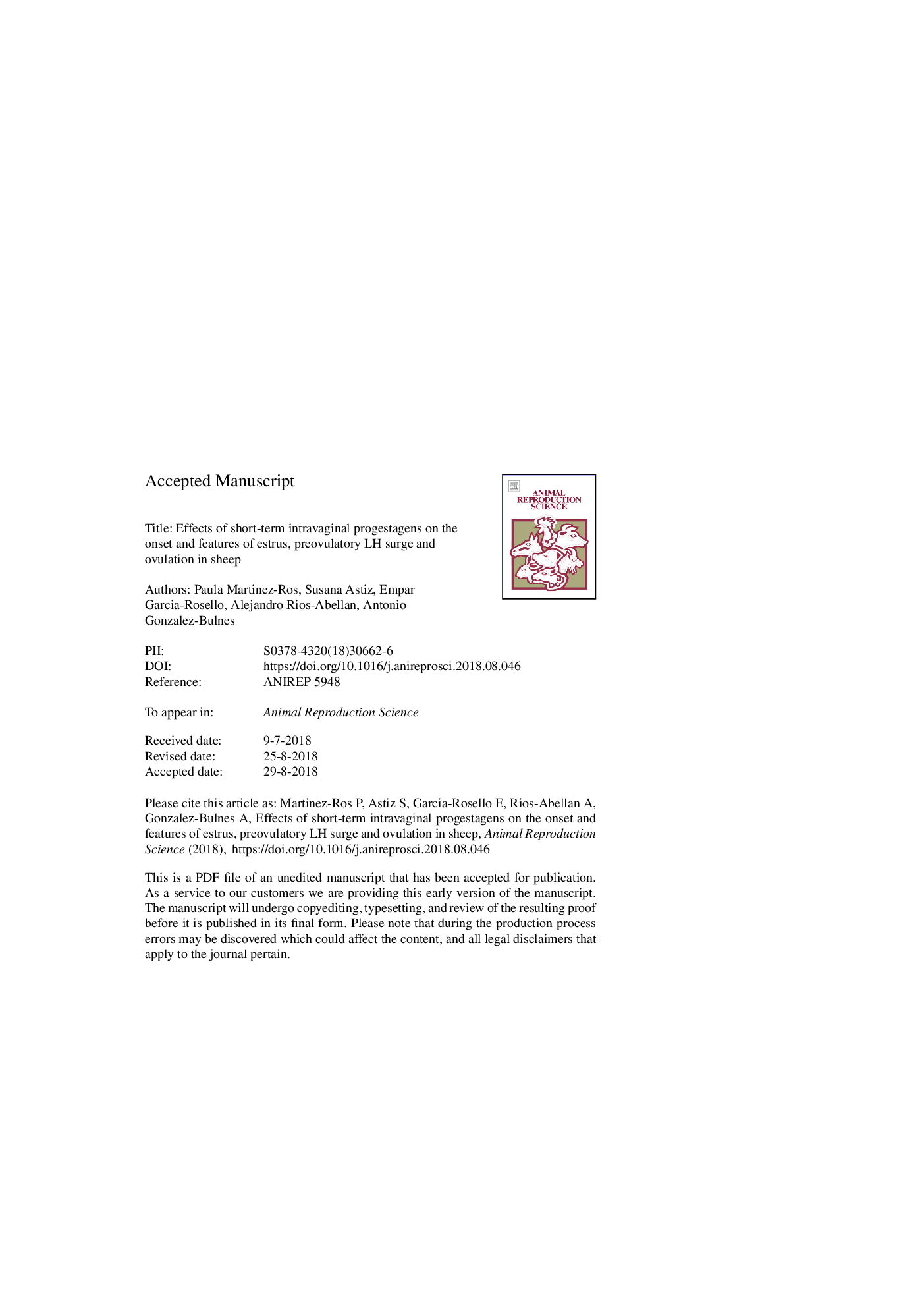| Article ID | Journal | Published Year | Pages | File Type |
|---|---|---|---|---|
| 10157375 | Animal Reproduction Science | 2018 | 24 Pages |
Abstract
In the present study, there was a comparison among classical long-term progestagen (fluorogestone acetate) protocols for synchronization of estrus and ovulation (14 days; group FGA14, nâ=â9 ewes) and short-term protocols based on 7 days of progestagen treatment plus a dose of prostaglandin F2α at either insertion (PG-FGA7, nâ=â11) or removal (FGA7-PG, nâ=â12). There were no significant differences in the ovulation rate and progesterone secretion among treatments. The FGA7-PG group, however, had a similar percentage of ewes expressing estrous behavior than the group FGA14 (90.9 and 100%, respectively, with a trend for a lesser percentage in the PG-FGA7 group, 63.6%) and about 90% of the ewes in the FGA7-PG group had the preovulatory surge release of LH 8âh after the onset of estrous behavior. These features may be related to a greater number of preovulatory follicles during growing phases (P < 0.05) and a greater plasma estradiol concentration (P < 0.05) in this group than in the classical 14-day group, which suggest these are more functional preovulatory follicles. In conclusion, therefore, the use of the FGA7-PG treatment may favor efficiency of progestagen-based protocols for reproductive management.
Keywords
Related Topics
Life Sciences
Agricultural and Biological Sciences
Animal Science and Zoology
Authors
Paula Martinez-Ros, Susana Astiz, Empar Garcia-Rosello, Alejandro Rios-Abellan, Antonio Gonzalez-Bulnes,
